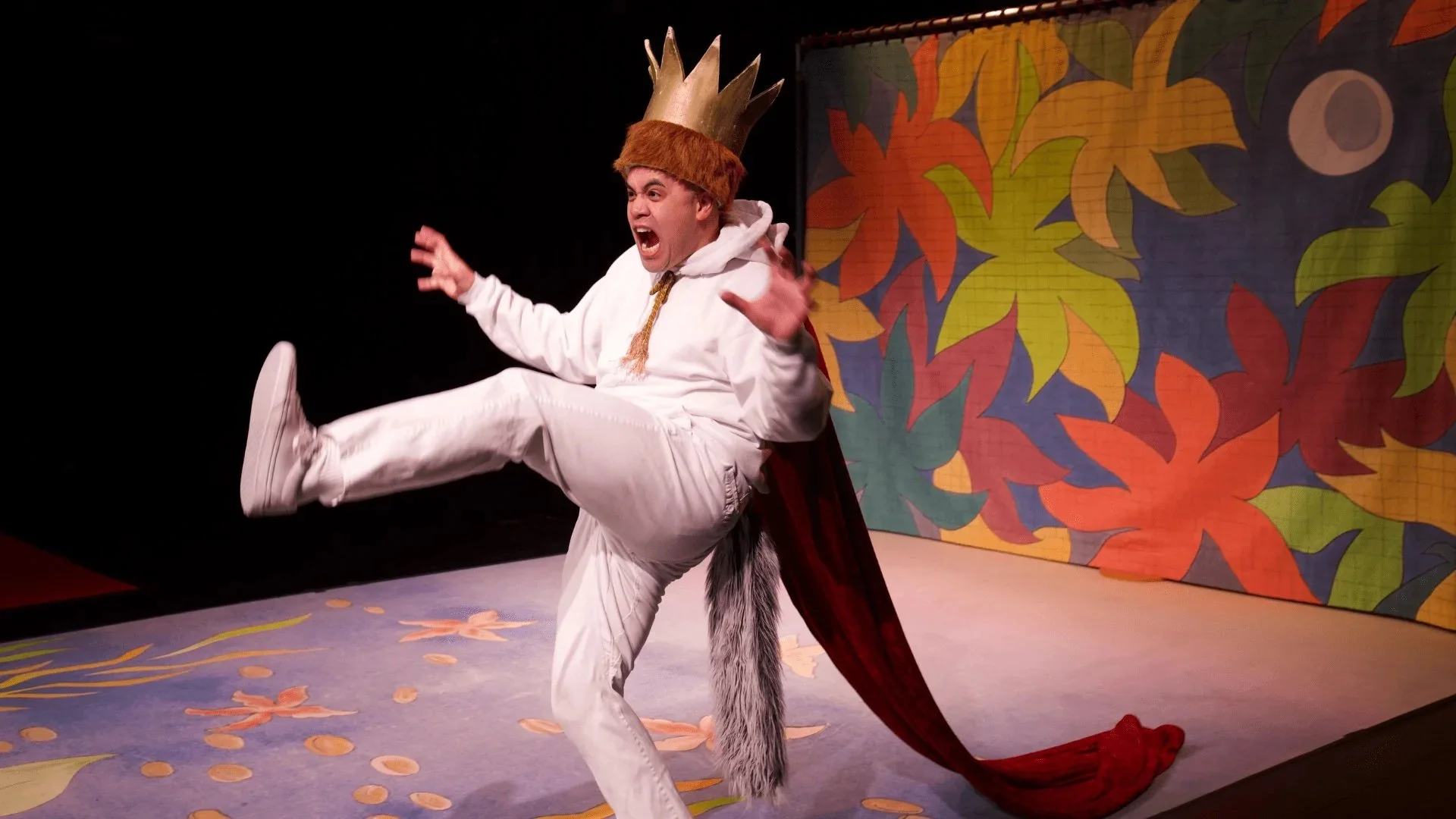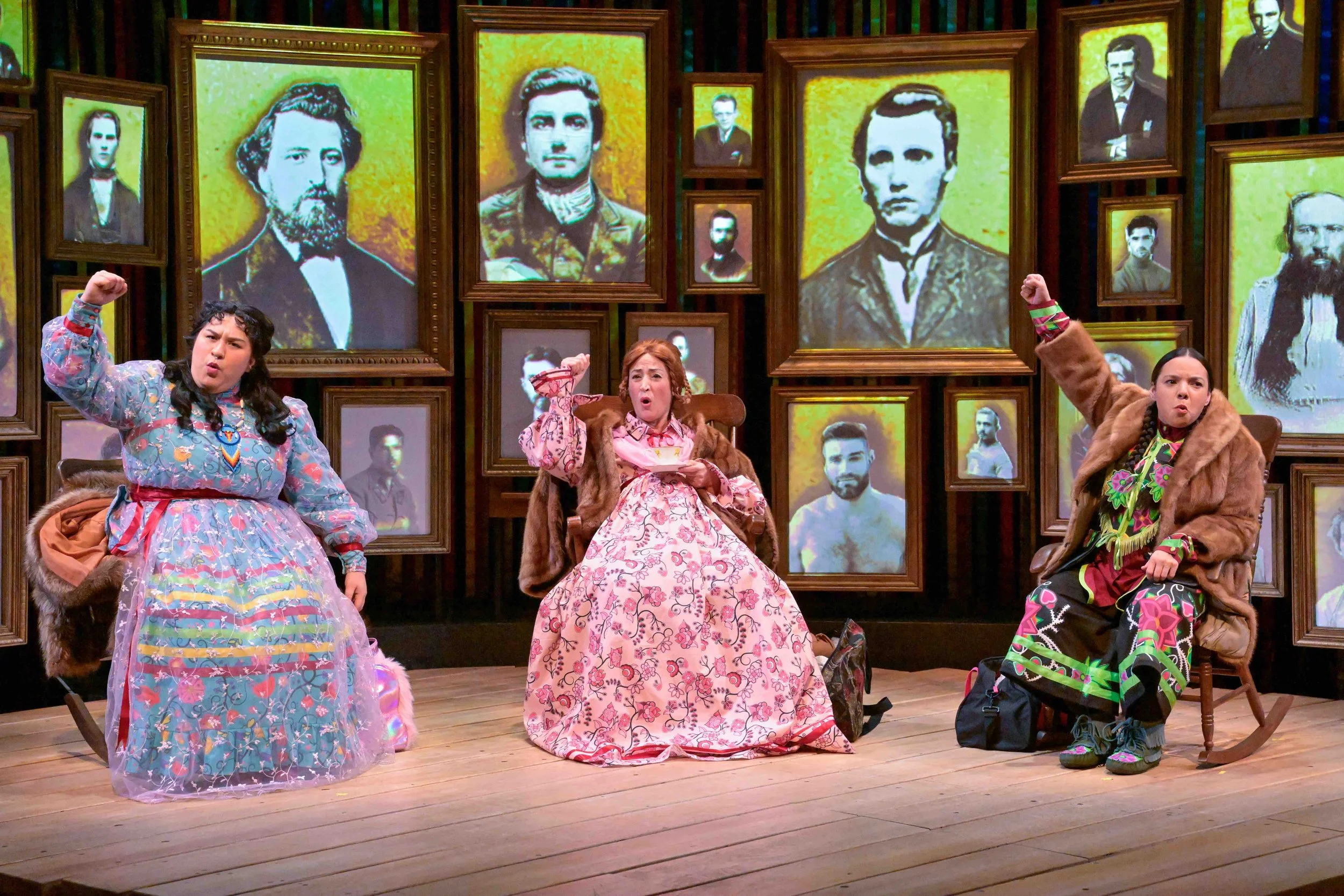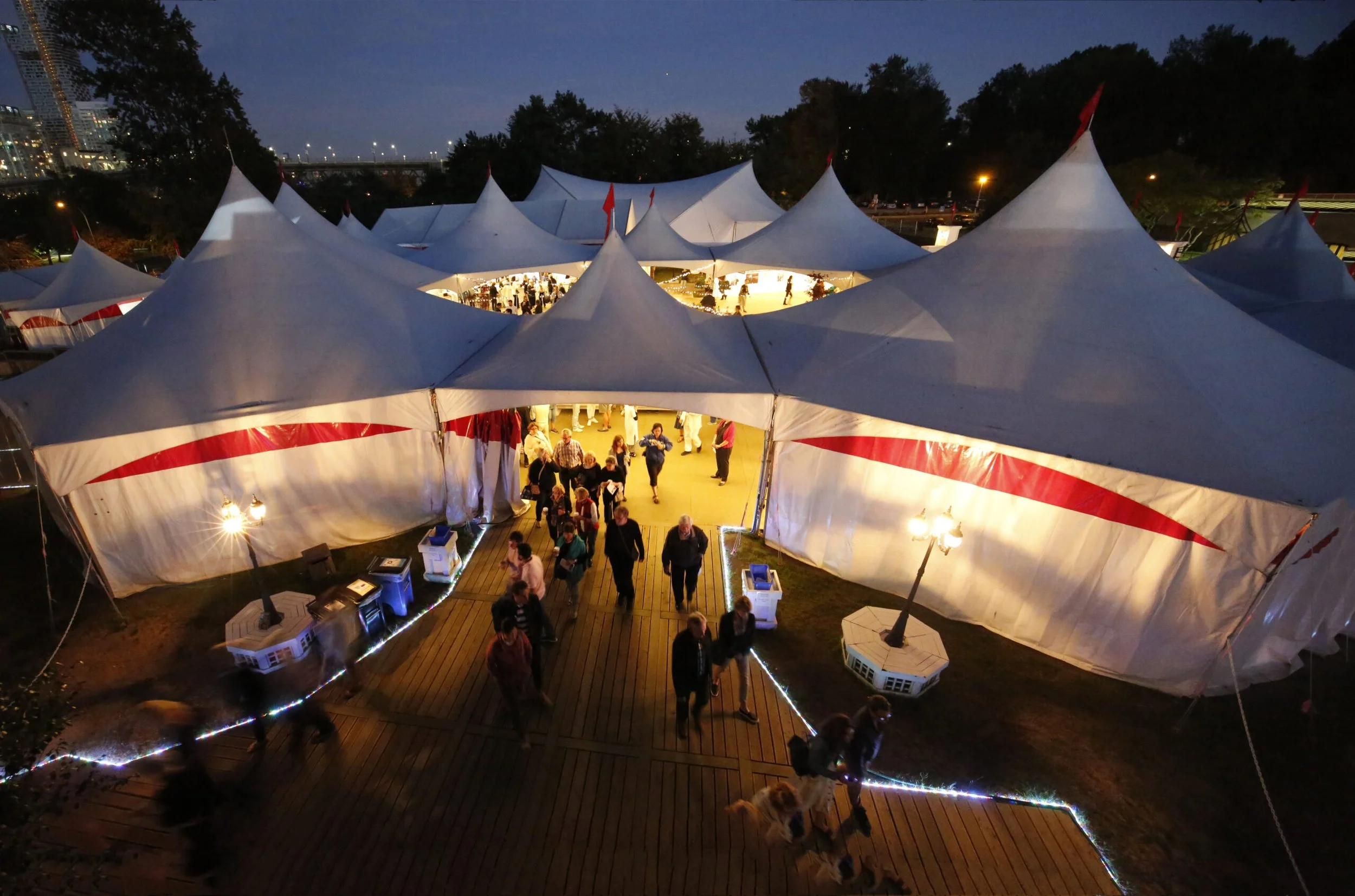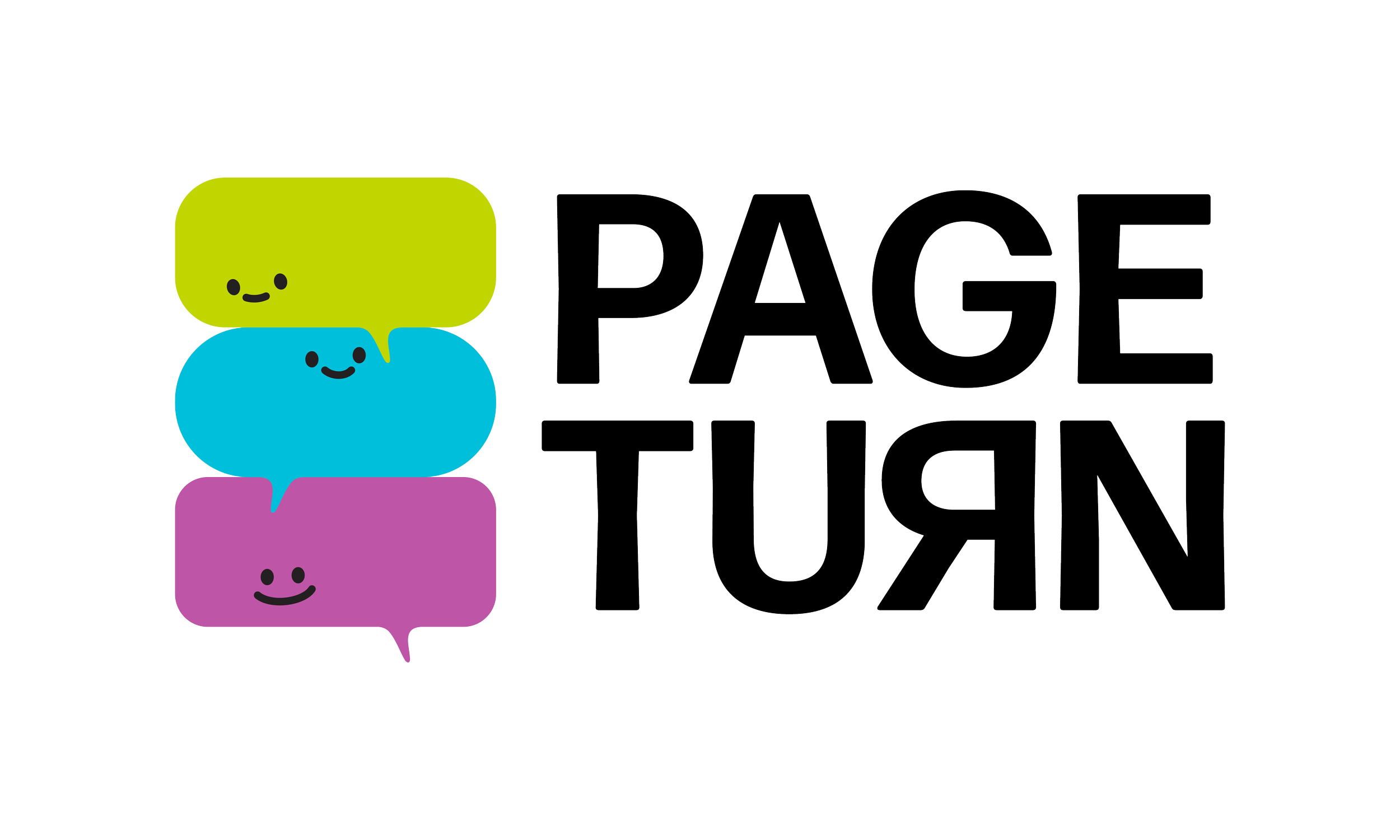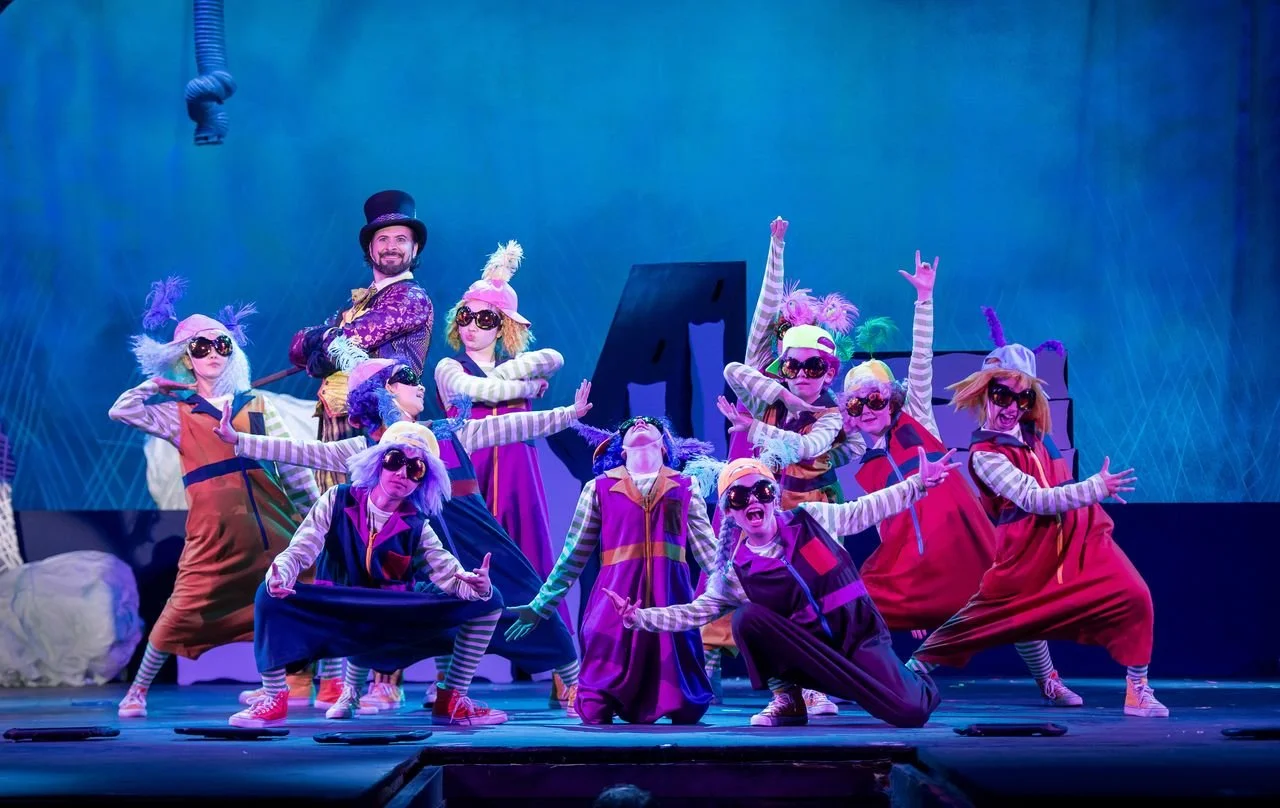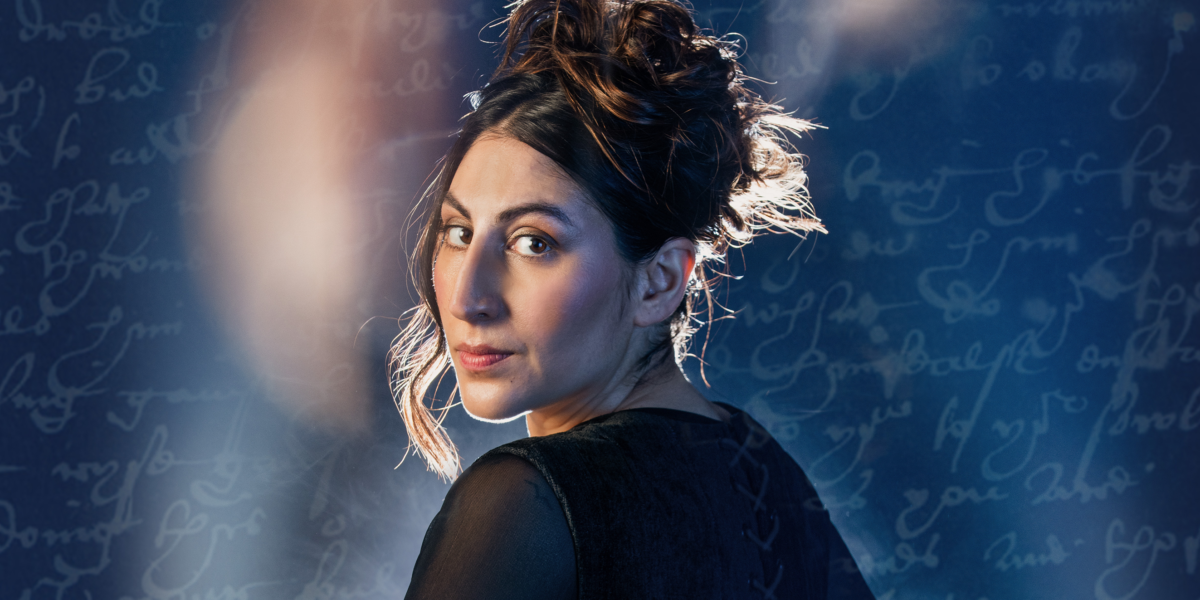Theatre review: Here We Go's fleeting glimpses of mortality are quietly unsettling
In Western Gold Theatre’s spare staging of Caryl Churchill’s taut, wry work, roles rotate across performances with some astonishing results
Left to right: Peihwen J. Tai, Kate Robbins, Bernard Cuffling, Rosy Frier-Dryden, and David Bloom in Here We Go. Photo by Javier Sotres
Western Gold Theatre presents Here We Go at the PAL Studio Theatre to May 25
THERE’S A MOMENT in Here We Go where a man—maybe the play’s closest thing to a protagonist—imagines his heart being weighed against a feather. It’s the ancient Egyptian test of the scales: if the heart’s too heavy, the person’s passage into the afterlife makes a sharp turn into oblivion. “Surely it can’t be light as a feather,” the man says with the anxiety of someone trying to size up their entire life.
To his (fleeting) relief, it’s just another passing moment—one of many that flicker through Caryl Churchill’s spare, strange, and quietly unsettling play, and one of many that catches in the back of your mind as you sit in the audience. What are you carrying? How much does the idea of death weigh on you these days?
Here We Go moves in three brief, distinct parts that together add up to just about 45 minutes. The production’s opening, set at a funeral, gives most of the cast (five players, to be exact) the chance to play with some loosely structured back-and-forth. As the deceased’s friends and acquaintances, the funeral attendees drift in and out of conversation, interrupting each other, trailing off mid-thought. Western Gold Theatre’s cast veers believably from having not much to say at all to petty gossip to reflections on life and loss. Somewhere in the mix, the reflections fold back onto the speakers themselves as a spotlight singles out each of the characters as they mention how they’ll die.
From there, the play slips into the afterlife of the man who’s just died. He enters the now bare set through its large centre arch, stumbling barefoot and wearing a hospital gown. The space around him feels darker, more hollow, punctuated by faint pulses of coloured light that emanate from the back wall. Glenn MacDonald’s set design and John Webber’s lighting sharpen the sense of suspension throughout the whole show.
Thrown into this kind of bardo (the Buddhist transitional state between death and rebirth), the man starts to speak. The words come out dense and spiralling, pulling from a strong sense of dread and all kinds of cultural debris; he moves between talking about the pearly gates and St. Peter, Greek mythology’s ferry to the next world, and the possibility of reincarnating as a bug. The afterlife “is worse than the Tube at rush hour,” he mutters. There’s a bit of humour in it, and a bit of cosmic dread.
Like the monologue itself, the man remains fragmented. The memories shared previously at his wake—witty, libertarian, hated dogs—don’t add up to a full picture, and that feels intentional. He’s a vessel, stumbling toward some version of meaning. David Bloom plays him with the right amount of disorientation; unmoored, a little dazed, but fully present in his long, winding journey.
And then comes what feels like the longest section, all wordless and slow. If the first two parts have some of the playwright’s British wryness, this one feels more grounded, and more broadly universal. The “here” is no longer abstract; it’s something more earthly and mortal.
In the performance I saw, this section (which unfolds with very little variation) was expertly carried by Rosy Frier-Dryden as a woman being cared for, and Bernard Cuffling playing her cargiver. Both do astonishingly subtle work. There’s no dialogue, no plot to move forward, just the same gestures, repeated with lived-in precision and careful emotional gradations. The tenderness of lifting a chin to fasten a button, the dignity of getting dressed for days that blend together, the exhaustion of aging bodies. This section and both actors’ performances cast a meditative, melancholy, and memorable shadow over the rest of the play.
It should be said that the program notes specify that in this production, all the roles rotate across performances. That fluidity feels right. Here We Go isn’t about fixed identities, or who any of these people are in any definitive sense. It’s about the experiences that pass between them—loss, care, memory—and those belong to everyone.
Under Kathryn Bracht’s direction, the spareness of this staging—how it looks, how it moves, how it speaks—holds the door open for you to bring what you bring. The title Here We Go is fitting. It could be a shrug, a warning, a prayer. Or a kind of communal breath before the next thing, whatever it is, and whenever it comes. ![]()




![Theatre review: Complete Works of William Shakespeare (abridged) [revised] [again] takes pleasingly panicked tour of the Bard’s canon](https://images.squarespace-cdn.com/content/v1/5f10a7f0e4041a480cbbf0be/1752776963817-BS2BYYQMLMSGU9OG3E37/Nathan-Kay-and-Craig-Erickson.-Photo-By-Tim-Matheson.jpg)
